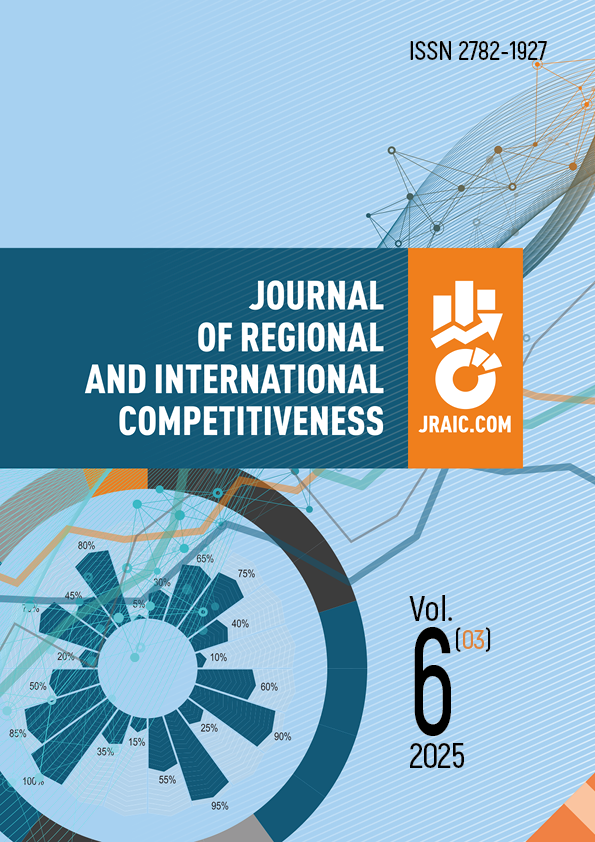ФГБОУ ВО Кубанский государственный аграрный университет имени И.Т. Трубилина
Краснодар, Краснодарский край, Россия
В статье исследуются многогранные проблемы управления современной организацией в условиях неуклонно нарастающей динамики цифровой трансформации, уделяя особое внимание интеграции искусственного интеллекта (ИИ) в качестве ключевого элемента, обеспечивающего гибкость, адаптивность и проактивность. Представлена разработанная нами холистическая иерархическая экономико-математическая модель, органично синтезирующая стратегическое планирование, оперативное управление и предиктивную аналитику, опирающуюся на сложные алгоритмы машинного и глубокого обучения. Модель учитывает динамические взаимосвязи между внутренними и внешними факторами, оказывающими влияние на деятельность компании. Подробно рассматриваются практические аспекты имплементации ИИ в критически важные бизнес-процессы, включая анализ воздействия ИИ на ключевые показатели эффективности организации за ретроспективный период 2020-2024 гг. с учетом отраслевых особенностей, макро- и микроэкономических тенденций, а также социокультурных аспектов. Обосновывается, что целенаправленное внедрение ИИ не только интенсифицирует процессы принятия решений за счет минимизации когнитивных искажений и оптимизации временных затрат, но и оказывает влияние на оптимизацию операционных процессов, адаптацию к постоянно изменяющимся рыночным условиям, повышение уровня персонализации взаимодействия с клиентами и, как следствие, существенное увеличение конкурентоспособности компании в долгосрочной перспективе. Особое внимание уделяется этическим аспектам использования ИИ и необходимости разработки механизмов контроля и регулирования, обеспечивающих прозрачность, справедливость и ответственность при принятии решений.
цифровая трансформация; искусственный интеллект; экономико-математическое моделирование; холистический подход; прогностический подход
1. Schwab, K. (2016). The Fourth Industrial Revolution. World Economic Forum. New York: Buseness.
2. Porter, M. E., & Heppelmann, J. E. (2014). How Smart, Connected Products Are Transforming Competition. MIT Sloan Management Review, 53(4), 64–88.
3. Brynjolfsson, E., & McAfee, A. (2017). The second machine age: Work, progress, and prosperity in a time of brilliant technologies. New York: WW Norton & Company.
4. Niven, P. R. (2006). Balanced Scorecard Step-by-Step: Maximizing Performance and Main-taining Results. John Wiley & Cons, Inc.
5. Manyika, J., Chui, M., Miremadi, M., Bughin, J., George, K., Kaplan, R., & Van Kuiken, S. (2017). A future that works: Automation, employment, and productivity. McKinsey: Global Institute.
6. Purdy, M., & Daugherty, P. (2016). Why artificial intelligence is the future of growth. Accenture. Retrieved from https://www.brianvmullaney.com/wp-content/uploads/2017/09/Accenture-Why-AI-is-the-Future-of-Growth.pdf
7. Bostrom, N. (2014). Superintelligence: Paths, dangers, strategies. Oxford: University Press.
8. O'Neil, C. (2016). Weapons of math destruction: How big data increases inequality and threatens democracy. Crown Publishing Group.
9. Raisch, S., & Krakowski, S. (2021). Artificial intelligence and management research: Opportunities and challenges. Academy of Management Perspectives, 35(4), 436–448.
10. Kohli, R., & Melville, N. P. (2019). Digital Strategy: New Directions for Information Systems Research. MIS Quarterly, 43(3), 677–688.
11. Chen, H., Chiang, R. H., & Storey, V. C. (2012). Business Intelligence and Analytics: From Big Data to Big Impact. MIS Quarterly, 36(4), 1165–1188. DOI: https://doi.org/10.2307/41703503
12. Duan, Y., Edwards, J. S., & Dwivedi, Y. K. (2019). Artificial intelligence for decision making in the era of Big Data: evolution, challenges and research agenda. International Journal of Information Management, 48, 63–71. DOI: https://doi.org/10.1016/j.ijinfomgt.2019.01.021
13. Huang, M. H., & Rust, R. T. (2018). Artificial intelligence in service. Journal of Service Research, 21(2), 155–172. DOI: https://doi.org/10.1177/1094670517752459
14. Van Dijck, J., Poell, T., & de Waal, M. (2018). The platform society: Public values in a connective world. Oxford: University Press. DOI: https://doi.org/10.1093/oso/9780190889760.001.0001
15. Floridi, L. (2019). The Ethics of AI: From Principles to Practice. Science and Engineering Ethics, 26(5), 2569–2588.
16. Davenport, Н. Thomas. (2018). The AI Advantage: How to Put the Artificial Intelligence Revolution to Work. London, England: MIT Press. DOI: https://doi.org/10.7551/mitpress/11781.001.0001
17. Autor, D. H. (2015). Why Are There Still So Many Jobs? The History and Future of Workplace Automation. Journal of Economic Perspectives, 29(3), 3–30. DOI: https://doi.org/10.1257/jep.29.3.3
18. Kane, G. C. et al. (2019). The Technology Fallacy: How People Are the Real Key to Digital Transformation. London, England: MIT Press. DOI: https://doi.org/10.7551/mitpress/11661.001.0001
19. Bughin, J., & Hazan, E. (2017). The Age of Analytics: Competing in a Data-Driven World. McKinsey & Company.
20. Zuboff, S. (2019). The Age of Surveillance Capitalism. Public: Affairs.
21. Tapscott, D., & Tapscott, A. (2016). Blockchain Revolution. New York: Penguin.
22. Ross, J. W., Beath, C. M., & Mocker, M. (2019). Designed for Digital: How to Architect Your Business for Sustained Success. London, England: MIT Press. DOI: https://doi.org/10.7551/mitpress/12188.001.0001
23. Nambisan, S., Lyytinen, K., Majchrzak, A., & Song, M. (2017). Digital Innovation Management. MIS Quarterly, 41(1), 223–238. DOI: https://doi.org/10.25300/MISQ/2017/41:1.03
24. George, G., Osinga, E. C., Lavie, D., & Scott, B. A. (2016). Big Data and Data Science Methods for Management Research. Academy of Management Journal, 59(5), 1493–1507. DOI: https://doi.org/10.5465/amj.2016.4005
25. Yoo, Y., Henfridsson, O., & Lyytinen, K. (2010). The New Organizing Logic of Digital Innovation. Research Policy, 39(8), 1094–1105.
26. Lusch, R. F., & Nambisan, S. (2015). Service Innovation: A Service-Dominant Logic Perspective. MIS Quarterly, 39(1), 155–175. DOI: https://doi.org/10.25300/MISQ/2015/39.1.07
27. Rust, R. T., & Huang, M. H. (2014). The Service Revolution and the Transformation of Marketing Science. Journal of Service Research, 17(2), 204–216.
28. Gartner, W. B., & Riessman, F. (1974). The Service Sector of the U.S. Economy. Academy of Management Journal, 17(2), 267–278.
29. Parker, G. G., Van Alstyne, M. W., & Choudary, S. P. (2016). Platform Revolution. W.W. Norton & Company.
30. Schwab, K., & Davis, N. (2018). Shaping the Future of the Fourth Industrial Revolution. New York: Currency.




















